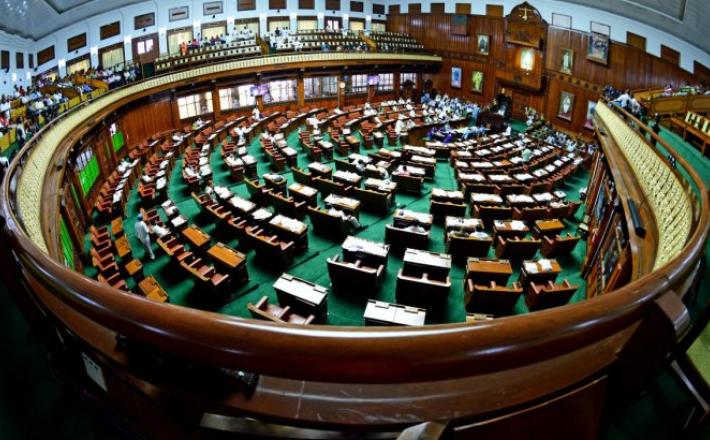India: Long march for women
Source: Deccan Herald
By Archana Datta,
Gender equality has assumed importance in deliberations on sustainable development and human rights as the centuries-old gender gaps persist in various areas of life, including in the domain of governance and politics. Protagonists for gender equality contend that women’s participation in politics can be a reinforcing factor as they are most likely to give new perspectives, approaches and momentum to empowerment initiatives.
Global efforts under the aegis of the UN resulted in a number of path-breaking declarations and resolves to usher in a gender equitable world. India, home to 18% of global population, is a signatory to all such global commitments, but sadly remains far behind in reaching the set global parameters in many areas, more particularly, in women’s political participation.
Last month, the Inter-Parliamentary Union (IPU) ranked India at 152 in terms of women’s representation in national parliaments, in a list of 193 countries. Neighbouring countries like Afghanistan, Bangladesh, Pakistan, China and Iraq all ranked higher than India. According to IPU and UN Women data, the Lok Sabha has only 11.8% women’s representation, with 64 women members in a house of 542; the Rajya Sabha has only 27 women members in a house of 237 (11.4%). Rwanda, with a population of 1.22 crore and which was recently ravaged by mass genocide, tops the IPU list with 61.3% women’s representation — 49 women members in its parliament’s 80-member lower house and 38.5% in the upper house — 10 women in a house of 26. Rwanda’s constitution has adopted gender equality as one of the fundamental principles and earmarked a quota of 30% for women in parliament.
If we look at the recent Karnataka assembly elections, which had 2.44 crore women in the electoral list, comprising 49% of the total electorate, there were only seven, or 3.1%, women, one more from the previous election in 2013, out of the 222 successful candidates. Women were only 219 among the 2,655 total candidates in the fray. In the Tripura assembly elections this year, there were only 24 women candidates among the 297 candidates, out of them only three were winners, two from the BJP, , one from the CPI(M).
Indian women remain poorly represented in the higher echelons of political power, despite having many strong women leaders — not just Indira Gandhi, but also completely self-made women like Mamata Banerjee or Jayalalithaa or Mayawati, who wield considerable power in their respective states and in national politics.
Click here to read the full article published by Deccan Herald on 6 November 2018.

By Archana Datta,
Gender equality has assumed importance in deliberations on sustainable development and human rights as the centuries-old gender gaps persist in various areas of life, including in the domain of governance and politics. Protagonists for gender equality contend that women’s participation in politics can be a reinforcing factor as they are most likely to give new perspectives, approaches and momentum to empowerment initiatives.
Global efforts under the aegis of the UN resulted in a number of path-breaking declarations and resolves to usher in a gender equitable world. India, home to 18% of global population, is a signatory to all such global commitments, but sadly remains far behind in reaching the set global parameters in many areas, more particularly, in women’s political participation.
Last month, the Inter-Parliamentary Union (IPU) ranked India at 152 in terms of women’s representation in national parliaments, in a list of 193 countries. Neighbouring countries like Afghanistan, Bangladesh, Pakistan, China and Iraq all ranked higher than India. According to IPU and UN Women data, the Lok Sabha has only 11.8% women’s representation, with 64 women members in a house of 542; the Rajya Sabha has only 27 women members in a house of 237 (11.4%). Rwanda, with a population of 1.22 crore and which was recently ravaged by mass genocide, tops the IPU list with 61.3% women’s representation — 49 women members in its parliament’s 80-member lower house and 38.5% in the upper house — 10 women in a house of 26. Rwanda’s constitution has adopted gender equality as one of the fundamental principles and earmarked a quota of 30% for women in parliament.
If we look at the recent Karnataka assembly elections, which had 2.44 crore women in the electoral list, comprising 49% of the total electorate, there were only seven, or 3.1%, women, one more from the previous election in 2013, out of the 222 successful candidates. Women were only 219 among the 2,655 total candidates in the fray. In the Tripura assembly elections this year, there were only 24 women candidates among the 297 candidates, out of them only three were winners, two from the BJP, , one from the CPI(M).
Indian women remain poorly represented in the higher echelons of political power, despite having many strong women leaders — not just Indira Gandhi, but also completely self-made women like Mamata Banerjee or Jayalalithaa or Mayawati, who wield considerable power in their respective states and in national politics.
Click here to read the full article published by Deccan Herald on 6 November 2018.